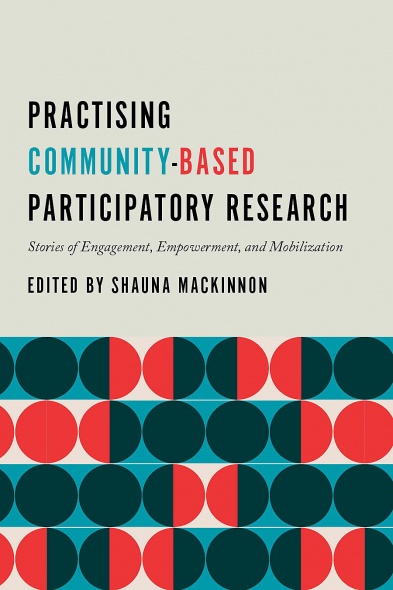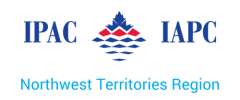As part of its Book Review Forum, the IPAC NWT Regional Group is pleased to present the following review for the month of May.
Shauna Mackinnon. Practising Community-Based Participatory Research. Vancouver: University of British Columbia Press. 2018
 This book is a collection of narratives describing examples of academic and community partnerships to address social issues within Manitoba. The book is edited by Shauna Mackinnon, a professor and researcher with a large body of work experience in Manitoba. The main purpose of the selected collections of essays is to provide the reader with concrete examples of community-based participatory research from the perspective of a researcher involved in the project.
This book is a collection of narratives describing examples of academic and community partnerships to address social issues within Manitoba. The book is edited by Shauna Mackinnon, a professor and researcher with a large body of work experience in Manitoba. The main purpose of the selected collections of essays is to provide the reader with concrete examples of community-based participatory research from the perspective of a researcher involved in the project.
The narrative format allows explanation on the researcher’s perspective of their role, their interaction with the community members and partners, and what lessons they learned that they would like to share with the reader. The book is laid out in three sections, the first providing examples of partnerships that developed over several years, the second perspectives from graduates and newer researchers and lessons learned, and the third, examples of “non‑traditional” research and collaborative projects. Each chapter ends with a list of references, including further reading material on the specific topics discussed in the project and sometimes notes or references to the actual study referenced for further reading.
I wanted to read this book for two reasons. First, the ideas and principles of community‑based participatory research are discussed frequently in feedback during public consultation on a wide variety of issues. I have had experience in various roles on different sides of the consultation process in the North. Most recently as a government employee, and previous to that as a project manager for a private consulting firm. In addition, I volunteered with a community organization where staff and clients were frequently requested to participate in consultation processes. I was interested in learning more about the research methodologies that have been advanced and used outside of the Northwest Territories. Secondly, I was interested because the focus of the book is on Manitoba and I was hoping that the examples and insight would translate well to provide potential ideas or reflections relevant to the Northwest Territories, due to some of the similarities in the demographics. Winnipeg has the largest Indigenous population of any major city in Canada, so community‑based participatory projects with Indigenous community members and organizations felt particularly relevant.
I think people who work with community organizations across the NWT or conduct consultations in any sector would appreciate the stories in this book. I was pleased to find a variety of project examples provided. I also liked the level of detail and reflection provided in the essays as to why some attempts at community engagement may have failed, and what was changed by the researcher for their next try – including the result from that shift. However, the majority – if not all of the chapters – provided in the book are from the perspective of the researcher, not the participating community members or partners, which does limit the takeaway.
Community-based participatory research can be a difficult process. Though it is based in the idea that marginalized communities should have autonomy in providing the solutions to the issues that they face, achieving this is not always straightforward. Often, due to the lack of resources in time, funding, and other barriers, these communities may not be able to advocate for themselves in ways that may be expected.
I appreciated that, throughout the book, the authors highlighted the struggles and barriers faced by those they were trying to collect research from for their projects. For example, in Chapter four authors Jim Silver, Janice Goodman, Cheyenne Henry, and Carolyn Young state “local people need to be involved, but in very low‑income communities where they have long experienced social exclusion and stigmatization, their participation cannot be secured quickly and easily.” (pg. 77). Issues with participatory research itself are highlighted as well: “many models of CBR [community‑based research] romanticize the notion that moving toward maximum community participation in all aspects of the research is optimal. However, community members are often overworked and have little time for, or interest in, involvement with the minutia of research.” (pg. 85).
While not all issues are addressed with solutions or suggestions on how to move forward, all narratives do cite what was done for that project and the book does demonstrate the importance of engaging in the right way. “According to the tribal paradigm, the research methodology should be in line with Indigenous values, include some form of community accountability, benefit the community, and ensure the researcher is an ally for the social and economic progress of the community but will not hurt it.” (pg. 113).
I think the honesty and reflection is more helpful to someone trying to learn from other people’s mistakes and successes that not having these issues acknowledged at all. I also appreciated the potential to dig deeper into an example with the references in each chapter.
For people who have extensive experience working with different communities and have built trust and relationships over time, the anecdotes and lessons will be familiar. However, for those who are inexperienced, these stories may help them ask questions they did not previously consider and allow them to better prepare their research, projects, and work with communities and organizations. Many of the narratives try to contextualize the perspectives of research participants and constraints they may be facing. “For example, many of our community researchers and interviewees live under the watchful eye of state agencies, including social assistance, child welfare authorities, and the criminal justice system, all of which exert significant control over their daily lives. This has implications for research because it complicates the process of establishing trust with such individuals.” (MacKinnon, pg. 24 – 25).
This book is geared towards readers who are looking to pursue academic research or work in community-based organizations. Community members carry the burden of supporting inexperienced researchers and consultants through academic work and consultations on a frequent and rotating basis. I would recommend this reading to anyone, but especially those new to working with different communities and for insight into some of the experiences they have had with previous consultations. It is valuable to read and go back to for reference. Anyone interested in research methods and community-based consultations in the public administration field would also find value in reading this book. Even if the suggestions and lessons learned from this collection of stories repeat knowledge the reader already has, I feel the book is still worth reading, as those lessons are worth hearing again.
This review was authored by Anusa Sivalingam, who is currently a Youth Engagement Activator at TakingITGlobal. Please note the views and opinions expressed in this article are those of the reviewer and do not necessarily reflect the policy or position of IPAC. Many thanks to University of British Columbia Press for providing a courtesy copy for our review.

